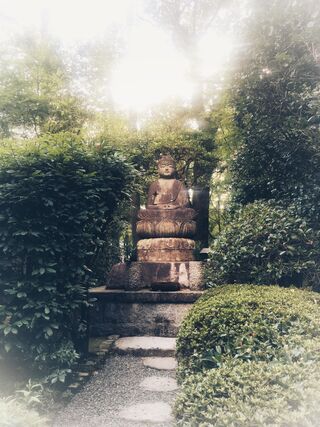What’s the Concern in Social Anxiety: Likability or Harmony?

What’s the Concern in Social Anxiety: Likability or Harmony?
In different cultures, socially anxious people may have different concerns.
Posted Apr 26, 2021 | By Andrew G Ryder Ph.D.
KEY POINTS
- Social anxiety disorder is generally understood as resulting from fear of negative evaluation.
- A Japanese concept of social anxiety, taijin kyofusho, involves fears of causing distress to others.
- A cross-cultural comparison in Japan and Canada suggests these differences in social anxiety could be partially explained by relational mobility.
- A minority of patients in Western cultural contexts may also have these fears of causing distress to others.

Socially anxious people might suffer through interactions—or try to avoid them as much as possible.
Just about everyone feels shy some of the time. But for some people, anxiety around other people is pervasive, distressing, and potentially debilitating. Such people may be suffering from social anxiety disorder. In some cases, a person might avoid as many social interactions as possible; in others, they might engage socially but with extreme distress. Either way, the anxiety is accompanied by physical symptoms; for example, shallow breathing, sweaty hands, trembling.
Fear of Negative Evaluation
Although some relief can be offered for these symptoms, clinical psychologists usually want to understand the underlying concerns. Many psychologists working in the cognitive-behavioral tradition have focused on the fear of negative evaluation. People with this fear become focused on the possibility that their behavior will be evaluated negatively by others, with potentially disastrous consequences.
In a previous post, I observed that panic attacks can emerge from a looping pattern: a physical symptom (e.g., chest tightness) is misinterpreted (e.g., as a potential heart attack), leading to anxiety, which in turn leads to an increase in physical symptoms (e.g., the chest tightness worsens). Something similar can happen with social anxiety. The fear of negative evaluation might lead to trembling hands, which leads the person to grip their wine glass more tightly, which actually worsens the shaking and increases the risk of spilling wine, which increases the sense that one is being negatively evaluated.

Has this monkey been excluded from the group?
More recently, some researchers have pointed out that there may be an evolutionary benefit to having at least some concern about negative evaluation. After all, if one is in a tight-knit social group, hunting and gathering to survive, expulsion from the group could be fatal. Does this evolutionary story mean that fear of negative evaluation is central to social anxiety across cultural groups?
Taijin Kyofusho
In the 1930s, Japanese psychiatrist Morita Masatake described a condition of social anxiety where people are concerned that their appearance, smell, or behavior is distressing to other people. He named this disorder taijin kyofusho (対人恐怖症)—the disorder (sho) of fear (kyofu) of interpersonal relations (taijin). Sometimes, the feared situations are similar to those experienced in, for example, North America: a person might be nervous about a public speech, or a first date. In other cases, the situations are more distinctive: a person might be concerned that their eye movements made someone else uncomfortable, or that their smell causes offense.
Even in the more familiar scenarios, however, the underlying concern is different. Rather than being primarily afraid that one is being evaluated by others, the person is instead preoccupied with the thought that others are offended, uncomfortable, or otherwise distressed. In a society that emphasizes the importance of interpersonal relatedness and harmonious interactions, some people become especially socially anxious when that harmony is disrupted. One maintains harmony by presenting in a proper way—if harmony is disrupted, perhaps one’s presence has been off, somehow.

Statue of Buddha at Ryōan-Ji Temple, KyotoSource: Andrew Ryder
Dr. Morita’s proposed therapy reflected such concerns. Although he was influenced by the work of Sigmund Freud, as so many were in those days, he had also read extensively in Shinshu Buddhism. Patients were encouraged to distance themselves from emotions, to accept them as part of life but without necessarily having much informational value. It is better to know one’s role in a given situation, and carefully execute that role, in order to maintain harmony.
Social Concerns and Relational Mobility
What is it about Japanese cultural contexts that tend to emphasize social concerns about harmony? And we should ask as well: what is it about English-speaking societies that emphasize social concerns about how the individual self is viewed by others? A cross-cultural study conducted in Japan and Canada offered an intriguing possibility: cultural group differences in relational mobility. I’ve previously written about relational mobility in the context of COVID-19’s spread. Might it also help to explain cultural variation in social fears?
Sato Kosuke and colleagues (2014) assessed rejection sensitivity (in their first study) and taijin kyofusho (in their second study). They also measured relational mobility in both of their studies. They proposed that in low relational mobility contexts such as Japan, where people tend not to shift between social groups or acquire new relationships regularly, maintenance of harmony is essential. You’re in the group you’re in, and if you’re excluded there aren’t many opportunities for new connections. In contrast, high relational mobility societies such as Canada would place a premium on confidently presenting yourself to new people.
As predicted, Japanese respondents reported higher levels of rejection sensitivity and higher levels of taijin kyofusho concerns than did Canadian respondents. More importantly, these cultural group differences were attributable at least in part to different levels of relational mobility in the two societies. This does not necessarily mean that Japanese and Canadian respondents were completely different from one another. Some Japanese respondents had lower levels of rejection sensitivity—and they tended to be the respondents who also experienced higher relational mobility in their local context. Does that mean there might be Canadians, or others, with taijin kyofusho?
Fear of Causing Discomfort to Others
From a certain point of view, taijin kyofusho is specific to Japan in that the term has culturally specific associations. But in a more general sense, if Dr. Sato and his colleagues are correct, we should expect to find concerns about harmony in other low-mobility contexts. And we might even observe some cases in societies that tend to be high-mobility; after all, even societies that strongly promote mobility may well have substantial pockets of low mobility. Consider, for example, many small towns in the United States.

Sometimes you just want to hide.
Years ago, I collaborated on a study suggesting exactly this (Rector et al., 2006). The senior author, Neil Rector, had observed that a substantial minority of his socially anxious patients in Toronto seemed more concerned about the discomfort of others rather than personal embarrassment. We developed a measure to assess these fears: the Social Anxiety—Distress to Others (SADOS) scale, validated it, and found that high scores predicted worse outcomes in standard cognitive-behavioural therapy.
Sometimes a cultural difference is exaggerated by the biases of clinicians and researchers, who are themselves influenced by their contexts. Concern for harmony is much higher in Japan—but it’s not absent in North America. I still remember the objections of one reviewer on the SADOS project: Since fear of negative evaluation had evolved to protect us from social anxiety, it was impossible to have social anxiety without this fear. This reviewer seemed not to notice that this evolutionary story was based on data from a very limited set of cultural contexts.
In any case, cultural variations are not inconsistent with evolutionary explanations. What we really need to survive and thrive is a good fit with our local conditions—in this case, social conditions. When the local ecology encourages us to move between social circles, it pays to cultivate the individual self and to be concerned about how others view that self. And when the local ecology requires us to maintain a small interconnected group of friends and acquaintances for decades, it pays to cultivate that group and to be concerned about maintaining the harmony of that group.
References
